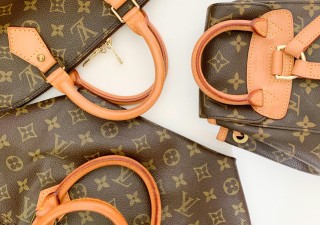Rolex S.A. v. FMTM Distribution Ltd [2020] SGIPOS 6
31 August 2020
![Rolex S.A. v. FMTM Distribution Ltd [2020] SGIPOS 6](https://asiaiplaw.com/storage/media/image/article/e038453073d221a4f32d0bab94ca7cee/banner/f93882cbd8fc7fb794c1011d63be6fb6/conversions/original-pexels-pixabay-364822-extra_large.jpg)
FMTM Distribution Ltd (the applicant) is a company selling high-end luxury watches. The applicant applied to protect the trademark “MARINER” (the applicationmark) in Singapore on February 5, 2016, under Trade Mark Application No. 40201602064R in Class 14.
Rolex S.A. (the opponent) is a watchmaker established in 1905, based in Geneva, Switzerland. The opponent has a registered trademark in Singapore under Registration No. T5925069E, “SUBMARINER”, filed in Class 14 (“the opponent’s mark), which was filed on June 11, 1959.
Upon publication of the application mark, the opponent filed its notice of opposition in Singapore against the application mark on April 5, 2018.
The trademarks in question for the opposition proceedings
|
Applicant’s Application Mark |
Opponent’s Mark |
|
MARINER |
SUBMARINER |
Grounds of opposition
Section 8(2)(b) of the Act. The application mark is confusingly similar to an earlier mark for similar or identical goods or services.
Section 8(4)(b)(i) read with Section 8(4)(a) of the Act. The use of the application mark would indicate a confusing connection with the proprietor of an earlier well-known mark in Singapore.
Section 8(4)(b)(ii) read with Section 8(4)(a) of the Act. The use of the application mark would cause unfair dilution in an unfair manner of the distinctive character of your marks.=
Section 8(7)(a) of the Act. The use of the application mark would constitute passing off.
Decision of the Registrar
Decision on Section 8(2)(b) of the Act
The Application Mark is confusingly similar to an earlier mark for similar or identical goods or services.
The Registrar based its decision on the following distinctivenessinquiry.
Distinctive and dominant features of the marks. The Registrar did not find that there are any particular features of either the opponent’s mark or the application mark which stand out. Both marks are word marks in block capital letters and have no additional stylizations to draw one’s eye to any particular subset of letters. In addition, both marks comprise single known words in the English language, each of which the Registrar consider to be compact enough, such that it would be contrived to poke and prod for some distinctive or dominant core. As such, the Registrar do not think there exists for either mark, any distinctive and dominant components.
Inherent distinctiveness of the opponent’s mark. The Registrar found that the opponent’s mark was composed merely of the word “submariner,” which is a known English word and therefore possesses only a medium degree of inherent distinctiveness
Acquired distinctiveness of the opponent’s mark. The Registrar found that the following evidence adduced by the opponent has not sufficiently made out its case of acquired distinctiveness due to the following reasons:
-
- An article regarding “The Rolex Submariner Exhibition” held in Singapore, which took place in August 2017. The Rolex Submariner Exhibition is not relevant, having taken place after the application mark’s filing date of February 5, 2016.
- Four online articles relating to the James Bond film series, purportedly demonstrating the distinctiveness of the opponent’s mark. The popularity of the film series in Singapore is presumed and not demonstrated by any of the four articles.
- No figures or invoices for sales or promotions were adduced, and of the fact that in terms of examples of promotional materials, the opponent produced only three advertisements.
Overall, the Registrar found that the opponent’s mark possesses a medium degree of distinctiveness. Consequently, it does not enjoy a high threshold before a competing sign will be considered dissimilar to it.
Visual/aural/conceptual similarity
Visual similarity. The application mark and the opponent’s mark are of relatively similar lengths: the former is seven letters long, while the latter is 10 letters long. Both are single words. The entirety of the application mark is encompassed in the opponent’s mark. For the reasons above, the Registrar found that the application mark is visually more similar than dissimilar to the opponent’s mark.
Aural similarity. The application mark and the opponent’s mark share three identical syllables, or at the very least three very similar-sounding syllables. Therefore, the Registrar found that the application mark is aurally more similar than dissimilar to the opponent’s mark.
Conceptual similarity. Both the opponent’s mark and the application mark convey the ideas of the sea and a sailor, thereby establishing conceptual similarity.
In light of the above, the Registrar found that the application mark is more similar than dissimilar to the opponent’s mark.
Goods similarity
Since both the application mark and the opponent’s mark are filed in Class 14 and the overlap of the good “horological instruments,” the element of goods-similarity is satisfied.
Likelihood of confusion
Factors relating to the impact of marks-similarity:
As concluded above, the marks are more similar than dissimilar.
Based on the evidence adduced for the element of acquired distinctiveness above, the opponent’s evidence has not established any reputation on the part of the opponent’s mark.
As for the reputation of the application mark, the following evidence submitted by the applicant were found to be ambiguous and therefore the application mark does not possess an established reputation:
- A large number of customer sales invoices dating back to July 31, 2009, issued by Franck Muller Pte Ltd. The applicant has not explained its relationship, if any, with Franck Muller Pte Ltd, and therefore that there is no evidence that any purported use of the “MARINER” mark by Franck Muller Pte Ltd is attributable as use by the applicants of the mark.
- Two sets of website printouts from the applicant’s websites, one listing 10 Franck Muller retailers in Singapore and the other apparently depicting the line of watches to which the application mark is applied. The application mark does not in fact appear on the images of watches in the website printouts, and therefore there is no evidence that “MARINER” is affixed onto or used as indicia of origin for the watches
Factors relating to the impact of goods-similarity
While the Registrar would agree that consumers tend to be somewhat attentive and fastidious while purchasing watches, the Registrar does not think that this average consumer would have specialist knowledge in relation to watches that he might bring to bear in making a purchase.
Taking the above into consideration, the Registrar found that there is a likelihood of confusion between the application mark and the opponent’s mark, both over the origin of the goods and in the belief that the users of the competing marks are economically linked.
The ground of opposition under Section 8(2)(b) therefore succeeds.
Decision on Section 8(4)(b)(i) read with Section 8(4)(a) of the Act
The use of the application mark would indicate a confusing connection with the proprietor of an earlier well-known mark in Singapore
Similarity of marks. This factor has been discussed in Section 8(2)(b) above.
Well known in Singapore. The opponent additionally cited a number of foreign decisions (from the European Union, Switzerland, Saudi Arabia, the United Arab Emirates and Kazakhstan) relating to the opponent’s mark and the applicant’s mark in its written submissions but failed to show how it has successfully enforced its rights that has led to its mark being well known in Singapore. Therefore, the Registrar found that this element has not been fulfilled.
With the well-known element was not fulfilled, there is no necessity to consider the rest of the elements and therefore this ground fails.
Decision on Section 8(4)(b)(ii) read with Section 8(4)(a) of the Act
The use of the application mark would cause unfair dilution in an unfair manner of the distinctive character of your marks.
As the well-known element was not fulfilled in the ground under Section 8(4)(b)(i), the element of “well-known to the public at large” will similarly fail here it is a higher threshold then the “well-known in Singapore” requirement as discussed in (c) above. Therefore, this ground will also fail.
Decision on Section 8(7)(a) of the Act
The use of the application mark would constitute passing off.
To make out a case under the tort of passing off, it is necessary to establish: i) goodwill, ii) misrepresentation and iii) damage.
On the element of goodwill, the opponent’s established network of retailers throughout Singapore demonstrates goodwill in the opponent’s business as a whole, which the Registrar found sufficient to establish goodwill.
Having concluded positively on the similarity of the parties’ marks and goods and services in Section 8(2)(b) above, the Registrar was satisfied that the element of misrepresentation had been made out.
Lastly, on the issue of damage, as there exists an overlap between the goods in respect of which the applicant seeks registration of its mark and those for which the opponent’s mark is protected, the parties are therefore clearly in direct competition with each other. As such, the Registrar found that there is a real likelihood of damage to the opponent’s interests exists.
As such, this ground of opposition had been made out.
Conclusion
As the opposition succeeded on Section 8(2)(b) and Section 8(7)(a), protection in Singapore was refused for the application mark.









